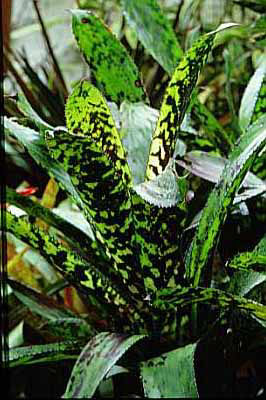Size
Ultimate height
0.1–0.5 metresTime to ultimate height
5–10 yearsUltimate spread
0.1–0.5 metresGrowing conditions
Moisture
Moist but well–drainedpH
Acid, Alkaline, NeutralColour & scent
| Stem | Flower | Foliage | Fruit | |
| Spring | Purple Green | |||
|---|---|---|---|---|
| Summer | Purple Green | |||
| Autumn | Purple Green | |||
| Winter | Purple Green |
Position
- Full sun
- Partial shade
Aspect
South–facing or East–facing
Exposure
Sheltered Hardiness
H1BBotanical details
- Family
- Bromeliaceae
- Native to GB / Ireland
- No
- Foliage
- Evergreen
- Habit
- Tufted
- Genus
Aechmea are evergreen perennials forming funnel-shaped rosettes of strap-shaped leaves, with a terminal spike of tubular flowers often with colourful triangular bracts, followed by fleshy fruits
- Name status
Correct
- Plant range
- Brazil
How to grow
Cultivation
Grow under glass or indoors in a epiphytic bromeliad compost in bright filtered light and low humidity. In the growing season water freely and apply a low nitrogen fertiliser monthly. Keep the central ""cup"" filled with soft water. Can be grown outdoors epiphytically in a warm, moist site or in moist, gritty, humus-rich soil
Propagation
Propagate by rooting offsets in early summer
Suggested planting locations and garden types
- Patio and container plants
- City and courtyard gardens
Pruning
No pruning required
Pests
May be susceptible to scale insects and mealybugs
Diseases
Generally disease-free
Get involved
The RHS is the UK’s gardening charity, helping people and plants to grow - nurturing a healthier, happier world, one person and one plant at a time.
